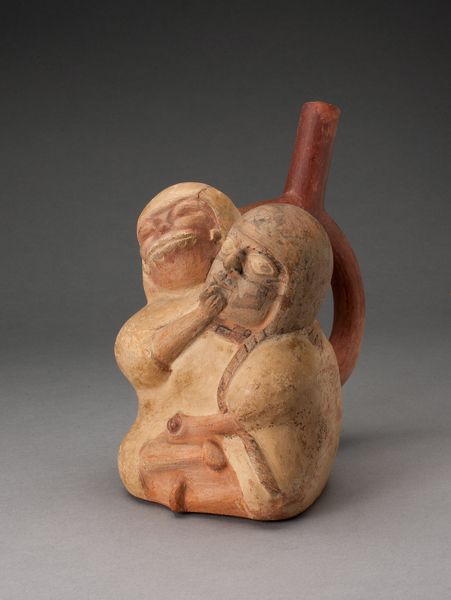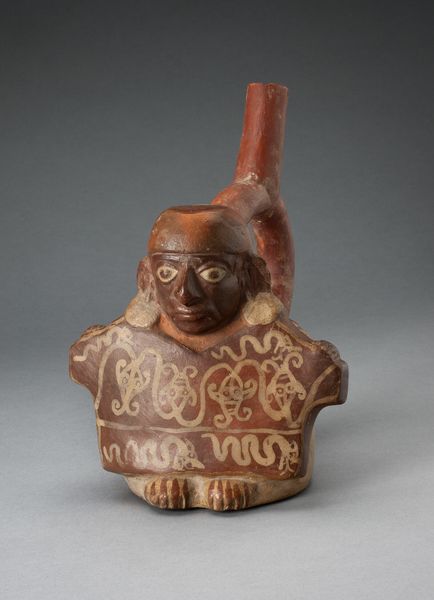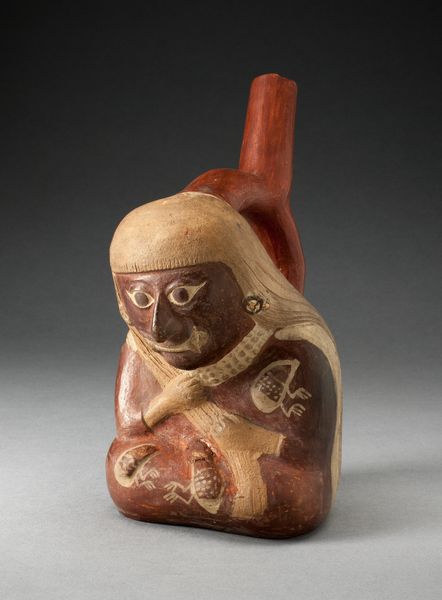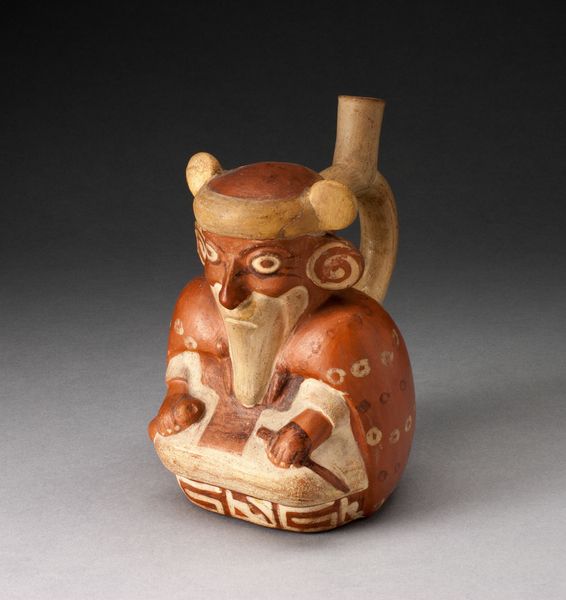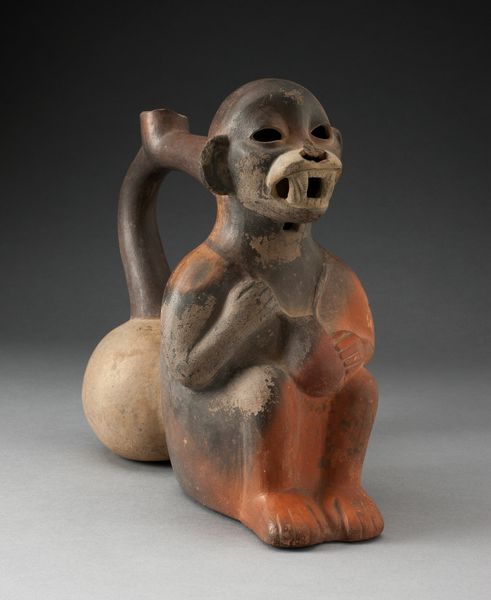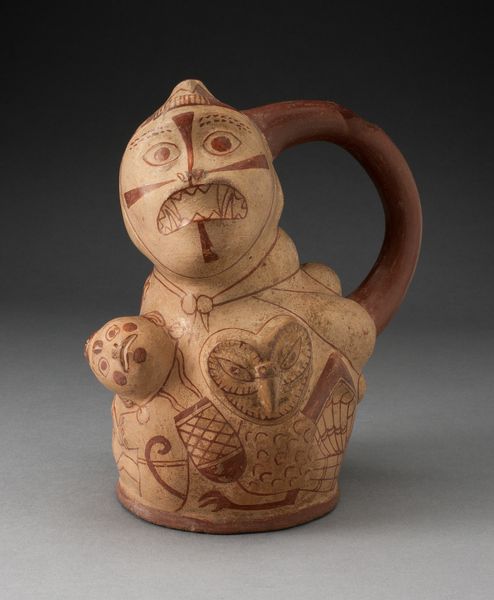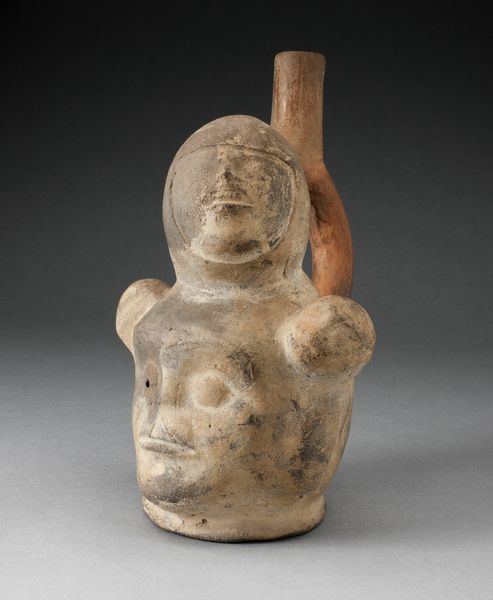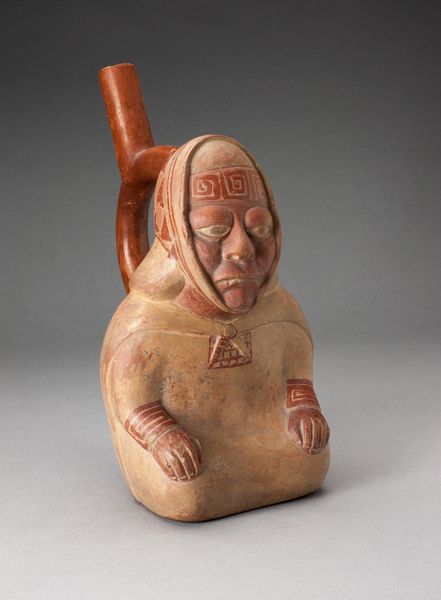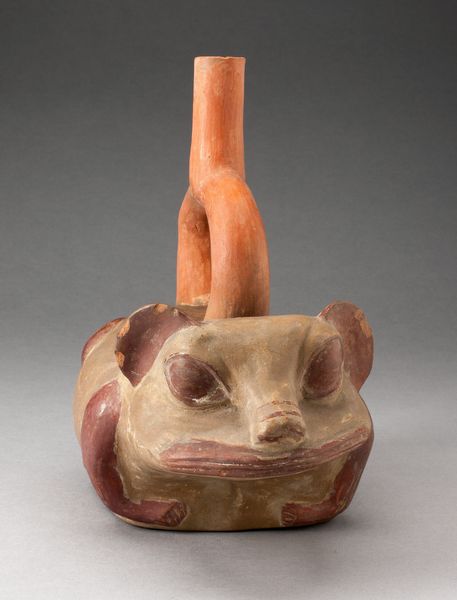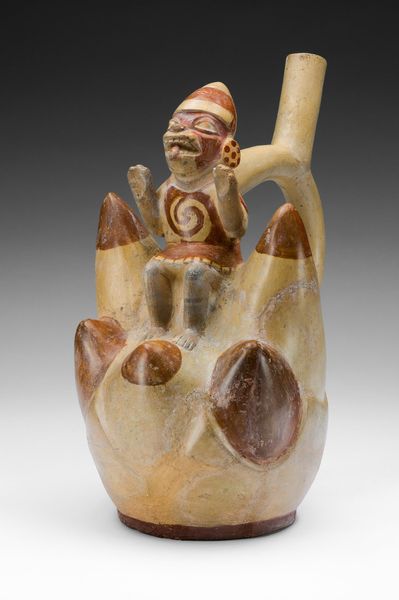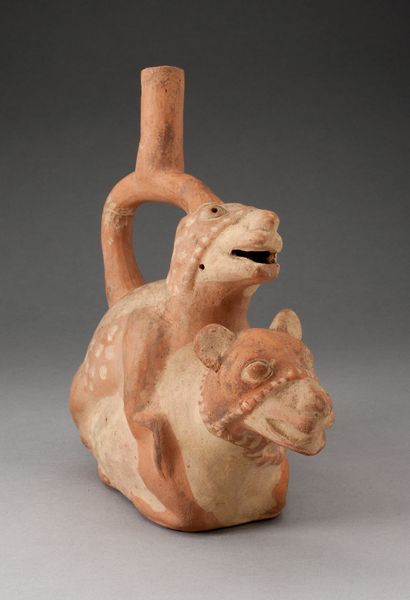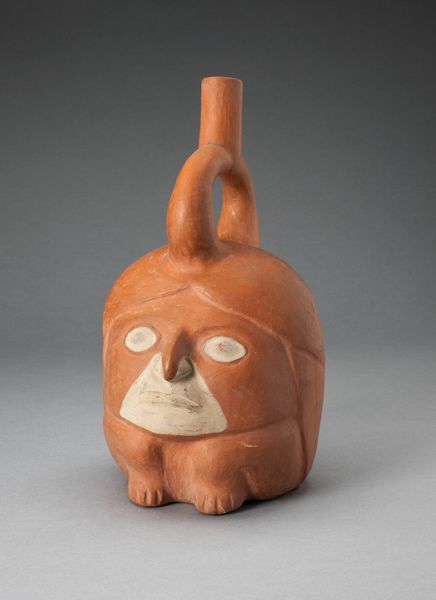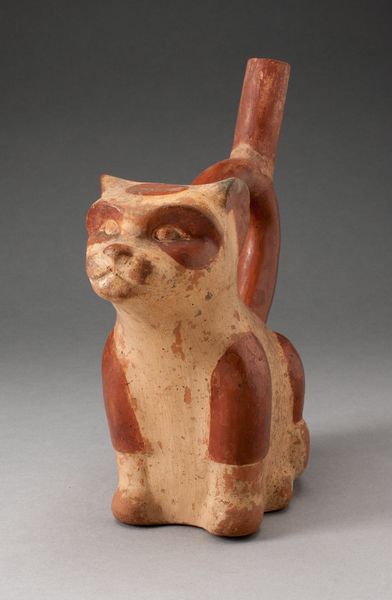
Handle Spouted Vessel with Composite Relief with Human Head, Puma, and Serpent c. 100 - 500
0:00
0:00
ceramic, sculpture, terracotta
#
ceramic
#
figuration
#
sculpture
#
terracotta
#
indigenous-americas
Dimensions: 22.5 × 20.6 cm (8 7/8 × 8 1/8 in.)
Copyright: Public Domain
Curator: What a striking object. Before us stands an earthenware "Handle Spouted Vessel with Composite Relief with Human Head, Puma, and Serpent." Crafted by the Moche people between 100 and 500 AD, it resides here at The Art Institute of Chicago. Its form blends functionality with complex symbolic representation. Editor: Immediately, the convergence of these creatures feels powerful. The colors are muted, earthly almost, yet the carved forms convey great intensity and tension. There’s a definite sense of hierarchy, of embedded power dynamics, even within a utilitarian object. Curator: Absolutely. The Moche were master ceramicists, using these vessels not only for practical purposes but as vehicles for storytelling and the transmission of cultural values. Consider the central role of the puma, a symbol of strength and leadership, and its coexistence alongside the human face and serpent. This arrangement suggests interconnected beliefs about social status, power, and the natural world. Editor: Looking closely, it seems impossible to divorce this piece from its potential ritualistic context. Each image is deeply rooted in Indigenous belief systems—animal guides, connections with ancestors and forces. This isn't merely decorative; it's speaking volumes about the world of the Moche and their place within it. We are offered a window into the ways people conceptualized life. Curator: Precisely. The ceramic medium also speaks volumes about the advanced craft and society able to bring the concepts to life. Each raised section must have required expertise and vision. It underscores the societal importance that artistry held for the Moche and reminds us how the ruling class uses these forms to communicate narratives about itself. Editor: As we ponder this vessel, it challenges us to consider the role of the colonizers. What happened to the artists who made these artifacts? How have their stories and knowledge been fragmented and scattered across continents? This ceramic jug seems both powerful and like an artifact that screams out of injustice in our present moment. Curator: Indeed. The "Handle Spouted Vessel" is not just an artwork; it is a document connecting us to the history of Moche culture. The narratives in clay that challenge contemporary social considerations force a new perspective about the complex narrative woven into art. Editor: For sure. The voices of people making art echo loudly, carrying centuries of both strength and struggle, but this form becomes an affirmation of power. A strong message emerges through the layers and histories in each figure in this narrative scene.
Comments
No comments
Be the first to comment and join the conversation on the ultimate creative platform.
